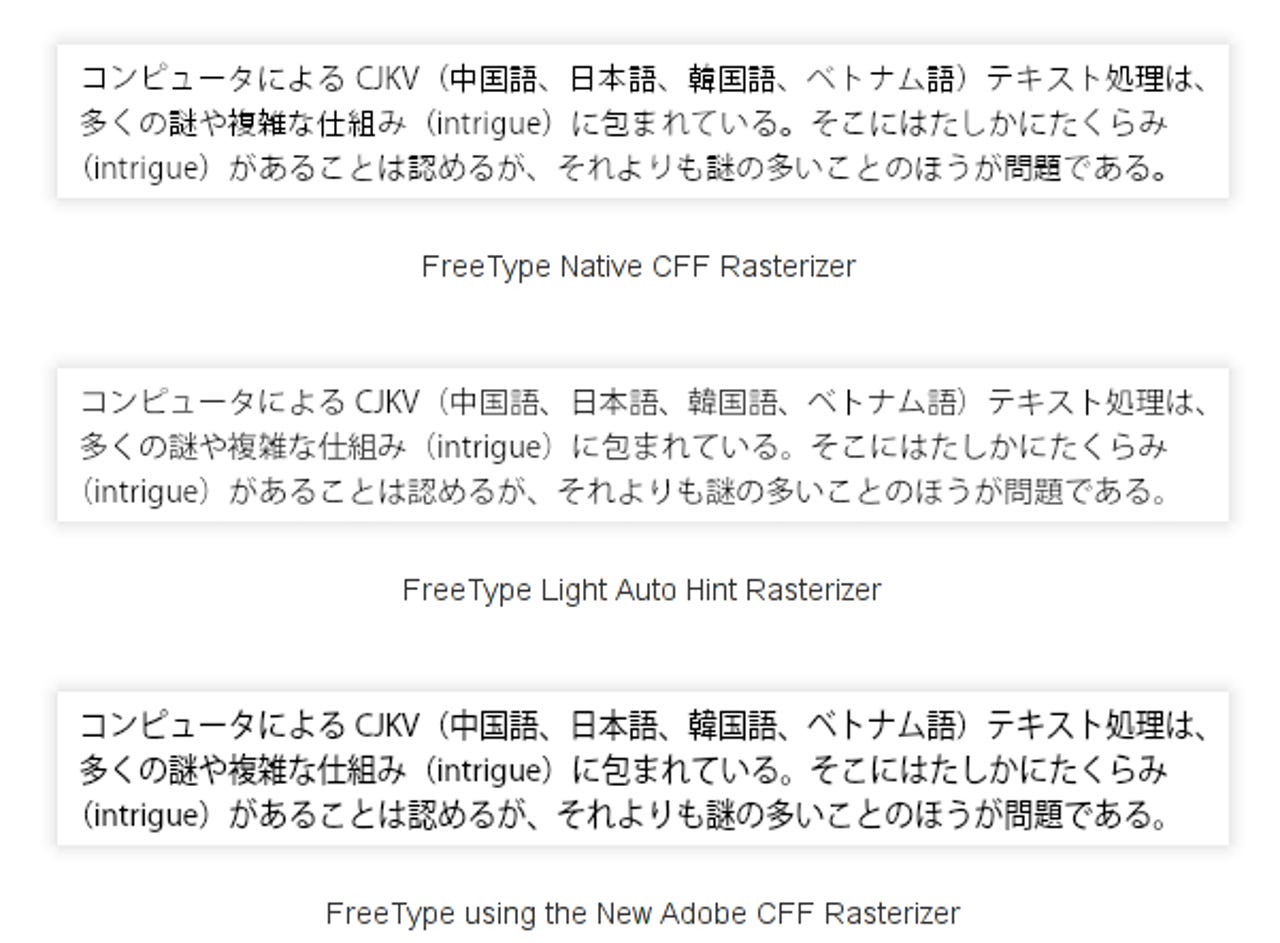Google and Adobe team up to improve iOS, Linux fonts

If you are using a Unix-like device that has visual output — be it an iPhone, Android device, iPad, Linux machine, or Unix supercomputer — the system will need a library to render fonts, and that library is typically FreeType. This open-source library has found its way onto over a billion devices, but, unfortunately, its rendering has often lagged behind that found in Windows and Mac OS, often due to patent issues.
Today, though, the project took a step forward, as Google and Adobe announced the contribution of the Adobe CFF (Compact Font Format) rasterizer to FreeType.
Fonts today are described by two methods: TrueType, or Compact Font Format.
"TrueType puts most of the emphasis on instructions built into the font, while Type 1 [PostScript] and CFF rely more on intelligence in the rasterizer. This makes the quality of the rasterizer particularly important," wrote Adobe senior program manager Nicole Minoza in a blog post.
One of the advantages of CFF fonts is that they have a smaller file size than TrueType fonts, which have dominated font usage online and in mobile devices until now. But the switch to CFF will not happen overnight; the majority of users will need to wait until the platforms they use fully support the new engine.
As FreeType said in its latest changelog, the Adobe CFF engine is "vastly superior" to the existing CFF engine used by FreeType. The Adobe engine is currently disabled by default, but is regarded as a mature beta, and FreeType is encouraging all users to test the new engine.
It's clear to see why; the results speak for themselves:
"Text rasterization produced by the new Adobe CFF engine in FreeType is dramatically more faithful to the typeface design. The improvements include better stem widths and placement, fewer dropouts, dramatic reduction in the 'blobbiness' of Chinese, Japanese, and Korean, and more even visual weight," wrote Google's Stuart Gill and Brian Stell in a blog post.
It's been a long time coming, but, at a time in the near future, systems reliant on FreeType will not be lagging the font display capabilities of the mainstream desktop operating systems.
"Users of devices that incorporate the new version of FreeType will have the same font rendering experience for CFF fonts that they have enjoyed for many years on Windows and OS X," said Minoza.
Finally!
